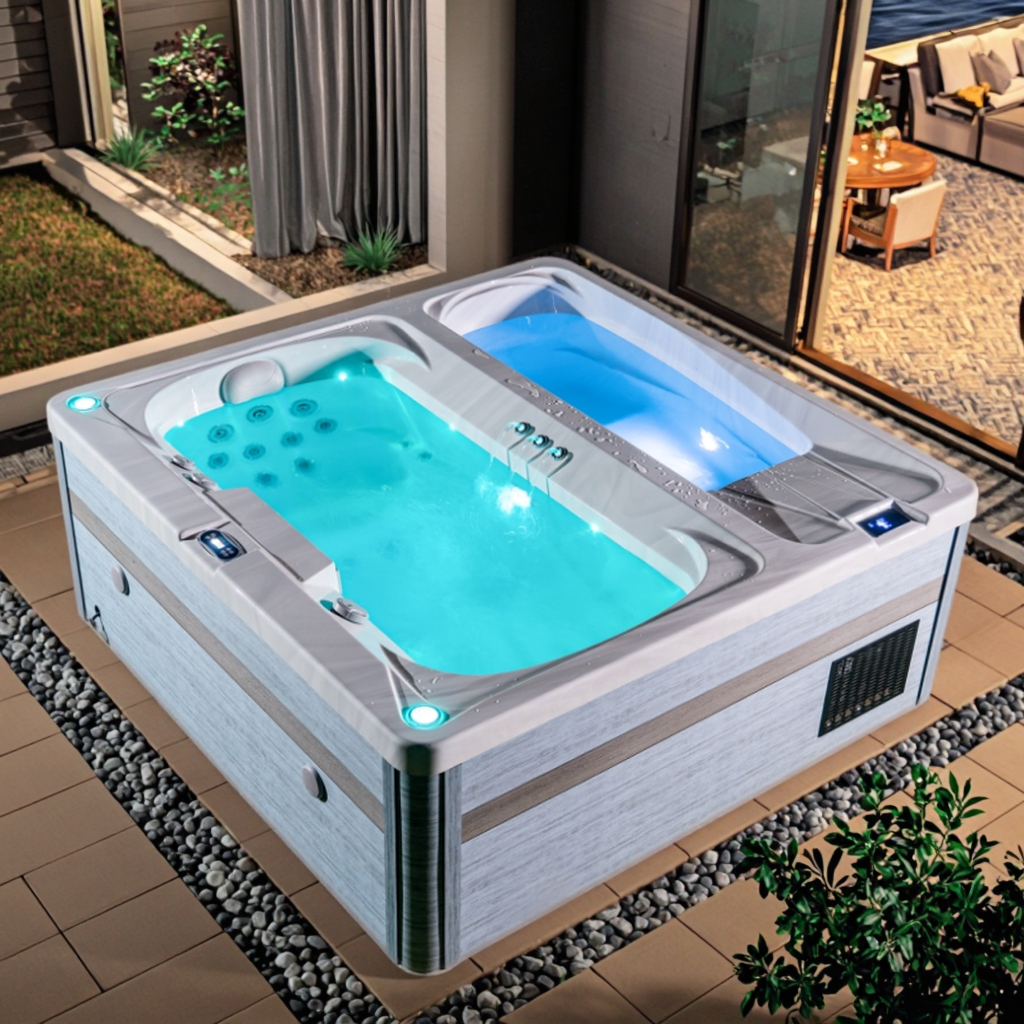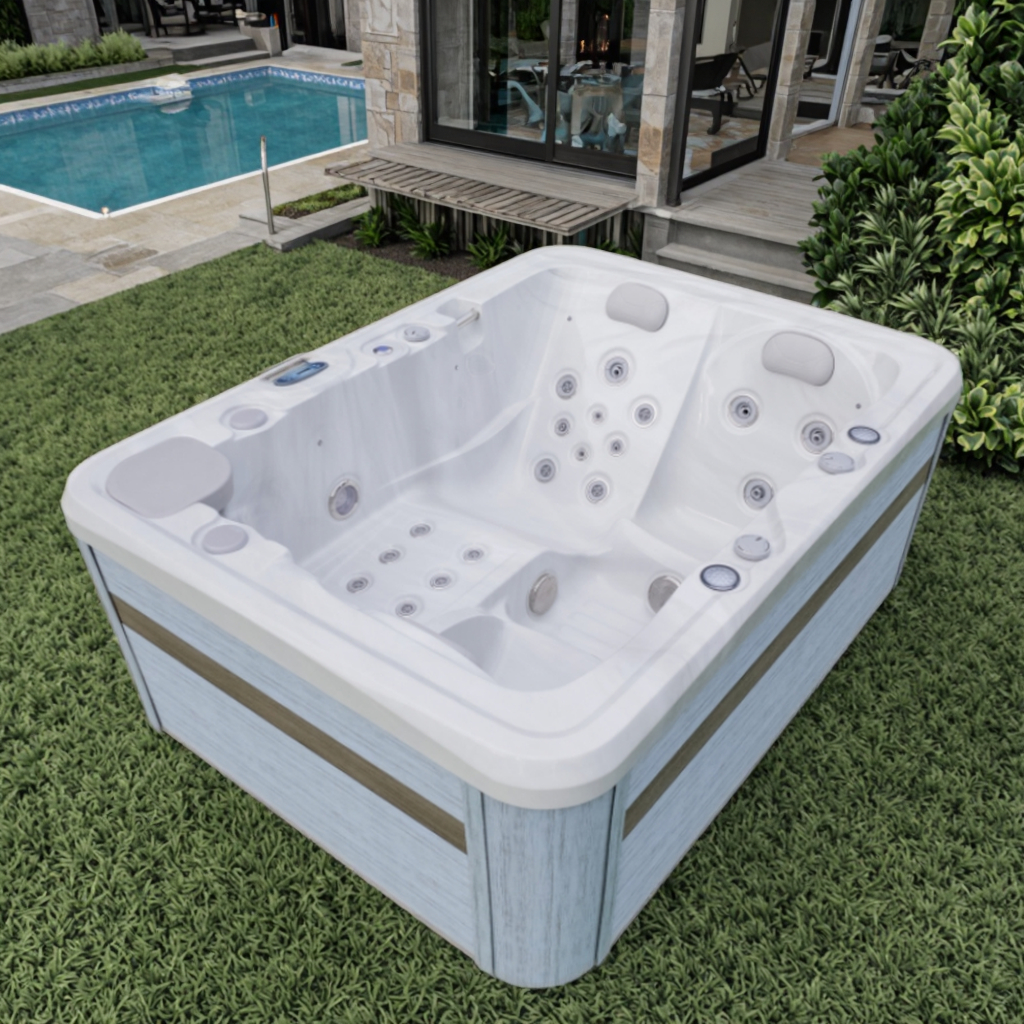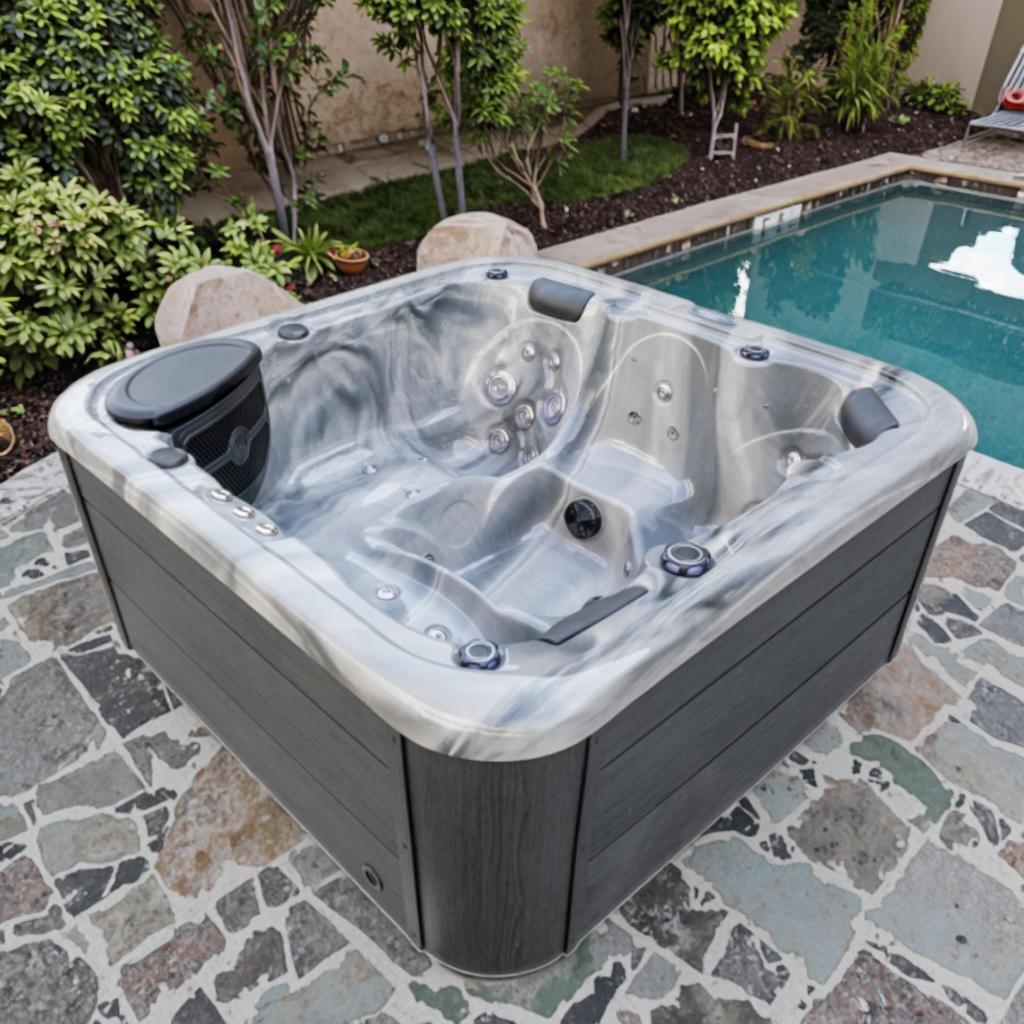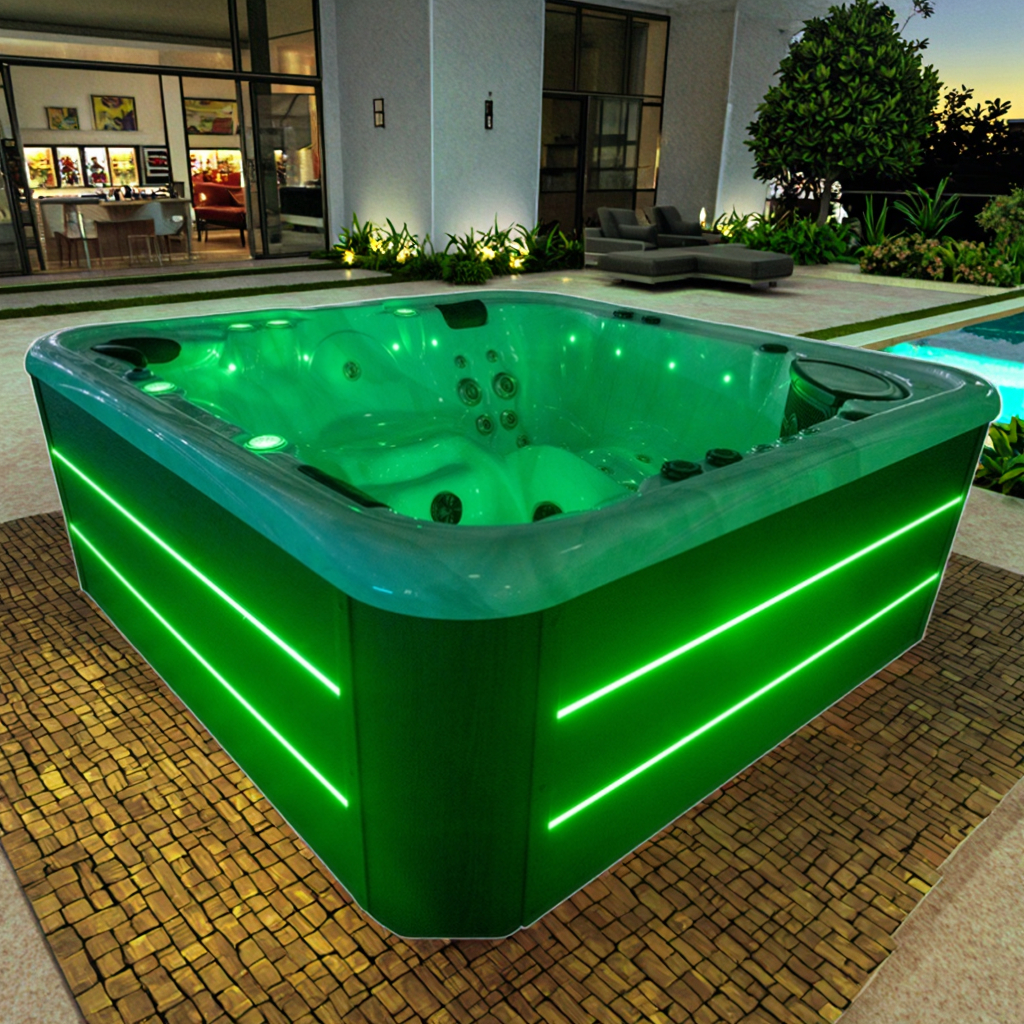
Can an outdoor spa hot tub be transported on its side?
2025-10-16 15:35When transporting large household appliances, outdoor spa hot tubs present a particular challenge due to their large size, weight, and complex structure. A common question is: Can an outdoor spa hot tub be transported on its side?
This is a complex issue involving many aspects, including product structural mechanics, transportation safety regulations, the load-bearing structure of the equipment, and the stability of internal components. Understanding this issue is crucial for consumers, transportation companies, and installers. Improper transportation methods can cause structural damage to the hot tub, misalignment of internal components, functional impairment, and even irreversible mechanical damage.
This article will provide a comprehensive and professional analysis of the outdoor spa hot tub's structural composition, weight characteristics, center of gravity layout, internal component placement, safe transportation principles, and the feasibility of transporting it on its side. This systematically answers the key question: Can an outdoor spa hot tub be transported on its side?

What is an outdoor spa hot tub?
Before delving into the topic of transportation, understanding the structure and function of an outdoor spa hot tub is essential for analyzing its transportation limitations. An outdoor spa hot tub is a professional outdoor hot tub with hot water circulation and multiple jets. It typically features the following key components:
· Main tub structure: Constructed of materials such as reinforced acrylic, ABS plastic, fiberglass, or stainless steel.
· Frame support system: An internal metal or composite frame supports the device and the user's weight.
· Jet system: Distributed around the body, connected to a water pump, providing high-pressure jet massage.
· Pump system: One to three electric pumps drive the circulating water.
· Heating system: Maintains constant water temperature for a relaxing spa experience.
· Filtration system: Equipped with filters, a water tank, and a water intake.
· Control system: Electronic control panels, cabling, sensors, and other electronic components.
High-end outdoor spa hot tubs can weigh from 300 to 600 kilograms (150 to 200 kg), and even over a ton when filled with water. Due to their complex structure and highly integrated components, shipping methods must adhere to strict technical specifications.

Standard Transport Method: Standing Upright
The industry's mainstream transport method is to transport outdoor spa hot tubs upright, with the long side on the ground and the depth vertical. The reasons for this are as follows:
· The direction of gravity aligns with the frame's support;
· The showerhead, pump, and circuitry are not compressed or displaced by lateral gravity;
· The equipment's center of gravity is stable, making it easy to transport using conveyor belts, pulleys, or brackets;
· It conforms to the manufacturer's designed storage load orientation.
Upright transport is considered the only recommended method for outdoor spa hot tubs.
Why did the idea of "sideways transport" arise?
In some transport scenarios, to save space or accommodate corridors or doorways, movers or users may ask whether outdoor spa hot tubs can be transported sideways, with the long side upright or with their backs flat on the ground.
This option may appear to save space, but it hides multiple technical risks and could cause serious damage to the equipment. Therefore, its feasibility must be carefully analyzed from a mechanical, structural, and safety perspective.

Conflicts Between the Outdoor Spa Hot Tub Structure and Side-Load Transportation
1. Load-Bearing Direction of the Frame Structure
The frame design of an outdoor spa hot tub is based on "bottom-load bearing." The bottom ground plane typically utilizes reinforced steel frames and support legs, capable of bearing the weight of the unit and the weight of people in use. The side structures serve only to maintain the integrity of the tub and are far less resistant to compression than the bottom.
Putting an outdoor spa hot tub on its side changes the direction of gravity, forcing the side panels, originally designed to withstand tension, to bear longitudinal pressure, potentially causing side panel collapse, weld cracking, and deformation of the acrylic surface.
2. Improper Loading of the Shower Head and Piping System
Shower heads, connecting pipes, valves, and cables are typically installed and secured inside the tub, typically with the bottom as the reference point. If placed on its side:
· Lateral pressure on the shower head connector may cause the tubing to shift;
· Twisted joints may cause leaks;
· The high-pressure water pump connection may loosen, reducing hydrotherapy performance;
· Water may enter the air shower head due to incorrect water level estimation, causing electrical failure.
3. High Risk of Damage to Electronic Control Components and Heating Devices
Components such as the control panel, heating elements, sensors, solenoid valves, and power input ports are often located on one side of the tub, often relying on bottom-mounted brackets for positioning. When placed on their side:
· The control panel may be crushed or fall;
· The heater may tilt, causing condensate to flow back;
· Cables may lose tension protection, resulting in loose connections;
· PCBs may be subjected to stress, leading to desoldering or damage.
For these delicate electronic components, the mechanical disturbances caused by sideways transportation are extremely destructive.
4. Structural Deformation and Irreversible Damage
The tub shell of an outdoor spa hot tub is typically constructed of a composite material, with an acrylic surface, a fiberglass reinforcement layer, and an outermost insulation layer. When placed on their side for transportation, certain parts may:
· Prolonged stress, resulting in irreversible dents;
· Compression and delamination of the insulation material;
· Cracks in adhesive bonds;
· Severe surface scratches.
Even if these damages do not affect functionality, they can severely damage the aesthetics and sealing properties.
Safety Risks and Liability of Sideways Transportation
If the transporter arbitrarily places an outdoor spa hot tub on its side for transportation, the consequences are as follows:
· Product warranty voided: Most manufacturers explicitly stipulate that damage caused by non-standard transportation methods is not covered by the warranty;
· Difficulty in determining liability for damage: Since the internal structure is not visible during transportation, it is difficult to determine whether a malfunction is due to a manufacturing defect or transportation damage;
· Insurance companies will not pay: Transportation accident claims must be strictly handled according to standard procedures; placing the tub on its side is a human risk;
· Potential safety hazards: Deformation of the tub or failure of electronic control components could lead to short circuits, electric shock, or leakage.
Therefore, transporting the tub on its side is not only technically undesirable but also carries significant legal and financial risks.
How to properly transport an outdoor spa hot tub?
Since sideways transportation is not an option, proper transportation methods require the following:
1. Use a dedicated transport rack or pallet
· Ensure the tub is in full contact with the bottom;
· Install shock-absorbing rubber pads to prevent transportation vibration;
· The pallet has fixed slots for easy forklift handling.
2. Vertical Transport
· The tub must be vertical, bottom facing downward;
· Wrap with thick blankets or foam sheets to prevent scratches;
· Secure to the transport vehicle frame at all four corners with high-strength straps;
· Do not place heavy objects on the top or sides of the tub.
3. Environmental and Transport Route Assessment
· Measure the width of door frames, elevators, and aisles in advance;
· Remove door panels and set up temporary pulley tracks if necessary;
· Do not transport the tub sideways to facilitate passage through narrow spaces.

How can I temporarily adjust the position of a spa hot tub in special circumstances?
In extreme circumstances (such as elevator transportation or high-altitude lifting), it may be necessary to temporarily tilt the outdoor spa hot tub to accommodate the space. However, such operations must meet the following prerequisites:
· The transport time is extremely short and the angle is controlled (less than 90 degrees);
· No heavy objects are pressing on the sides of the tub;
· The internal electrical and plumbing systems are professionally disassembled and secured;
· The lifting operation is performed by a professional lifting engineer to ensure uniform load distribution.
Tilting in this case does not constitute "sideways transport" but rather falls under the category of short-term, controlled operations.
Can an outdoor spa hot tub be transported on its side?
In summary, transporting an outdoor spa hot tub on its side is neither recommended nor permitted. The underlying reasons include:
· The frame structure's load bearing direction does not match that of a sideways position;
· The nozzle and pump system may shift or be damaged due to the change in gravity;
· The electrical system is fragile and prone to failure when tilted;
· Equipment deformation may permanently affect its service life;
· Safety and responsibility management will become extremely complex.
What role do your experts and engineers play in production?
Our 20+ technical experts oversee everything from shell molding to hydraulic testing. They ensure each spa meets high-quality benchmarks before sales. With 200 experienced workers, we maintain efficient factory operations to support both small trial orders and large wholesale purchasing projects.
Buyers can request technical data sheets, assembly details, and quotes directly from our engineers and sales teams. This integrated expertise ensures that clients buy from a manufacturer focused on precision, not just cheap prices.
